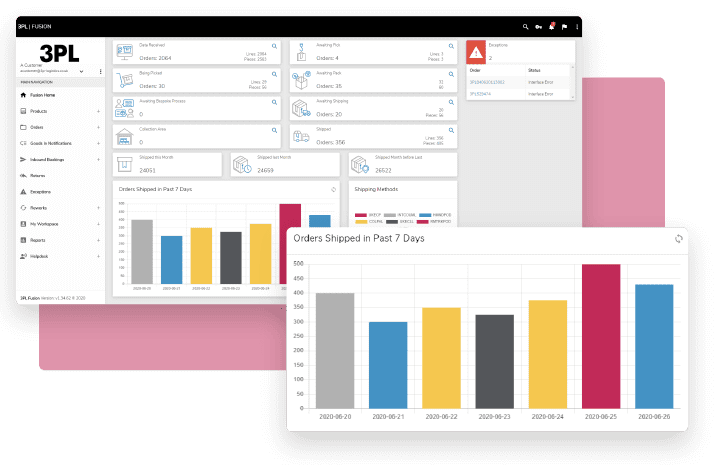The peak selling season for your eCommerce store may seem a long way off, but it’ll be on you before you know it. If you want to avoid last minute panics and put your business in a position to maximise your peak selling season, now’s the time to start preparing. Read on to find out everything you need to know to get your eCommerce store ready for the peak selling season.
How important is your peak selling season?
For many eCommerce businesses, it’s obvious that the peak selling season is important – but exactly how important is it?
If you’re trying to justify further investment or budget from your board of directors or funders to prepare for your peak selling season, it will strengthen your case if you have solid data to hand.
So, how important could the peak selling season be for your business? According to the National Retail Federation, small to medium sized retailers now take up to 40% of their annual sales in the final two months of the year. Yes, you read that right.
And, where are all of those peak season purchases made? The answer is increasingly ‘online’. 19% of retailers expect a staggering three quarters of all of their peak sales to come from eCommerce.
There’s no other way of looking at it. If you’re in eCommerce, you need to do as much as you can to maximise your sales during your peak selling season.
What is the peak selling season for eCommerce stores?
Before you start to get ready for your peak selling season, it’s helpful to figure out what you should classify as your peak selling season.
It’s easy to assume that your peak selling season will be Christmas. But, is it really as simple as that? Perhaps not.
Depending on which retail vertical you operate in, the markets you sell to and the products you offer, your peak selling season may be very different from other eCommerce businesses.


Know your key sales dates
When you’re gearing your eCommerce business up for your peak selling season, it helps to break down said season into a series of key dates. Like any large task, your preparations will be made easier by having a series of ‘target’ dates to work towards.
Here are some of the key dates on the UK retail calendar that may impact your business.
Black Friday
This is arguably now the biggest sales event here in the UK. Data intelligence company PCA Predict estimates that Black Friday alone is worth £2.5 billion to retailers. This insight is backed up by retailers themselves, with 35% saying that Black Friday is now their busiest day of the entire year.
Cyber Monday
With Black Friday gaining traction throughout the mid-2010s, online-only retailers were determined not to miss out and so ‘Cyber Monday’ was born. Cyber Monday typically takes place a few days after Black Friday (often coinciding with, or just after, pay day).
Last Collection Day
As click and collect and next-day delivery have become increasingly important for consumers, ‘Last Collection Day’ has become a key date in the retail calendar. Traditionally taking place on the last few days before Christmas, Last Collection Day is, as the name suggests, the last day that shoppers can pick up their orders in-store or make a purchase online for next day delivery.
Christmas Day
Who said the shops were shut on Christmas Day? Whilst Boxing Day used to be the biggest day in the retail calendar, these days online retailers are starting their Boxing Day sales on Christmas Day. Thanks to this tactic, Christmas Day is now an important shopping day in its own right, with the Centre for Retail Research estimating that an enormous £1 billion was spent on Christmas Day 2018.
Amazon Prime Day
If you sell your products through Amazon, then Amazon Prime Day needs to be one of the key dates on your calendar. The fact that it’s called Amazon Prime Day is a misnomer though, as the event actually takes place across two days.
Although the event is restricted to Amazon Prime customers, given that there are 200 million of them it’s an event eCommerce retailers cannot afford to ignore.
Key sales dates across the rest of the world
It’s not just the UK that loves a bargain! If you’re an eCommerce store that sells to international markets, then these are some of the other important sales dates you should be factoring into your preparations.
Click Frenzy
Click Frenzy is basically the Australian version of Cyber Monday. Typically held during a single day in mid to late November each year, Click Frenzy sees retailers across Australia advertising their best deals on clickfrenzy.com.au.
Since its launch in 2012, Click Frenzy has expanded to run Click Frenzy days throughout the year, particularly May.
So, if you sell into the Australian market, think about how Click Frenzy could impact you.
Alibaba Singles’ Day
During mid-November each year, the people of China eagerly await Alibaba’s Singles’ Day. It always takes place on 11th November and celebrates single people in opposition to Valentine’s Day. Predominantly an online sales event, Singles’ Day is enormously popular, generating over $74 billion in sales in 2020.
How to get your eCommerce store ready for the peak selling season
With those key dates noted, you should have a good idea as to when your peak selling season will take place. Great, but now what? The next step is to start planning.
Start planning early
There’s a reason we’ve published this article in June! If you’re an eCommerce business that experiences its peak selling season around Christmas, then you should start planning now.
The majority of online retailers begin their preparations at least 4-6 months in advance of their peak selling season.


Utilise data
You should begin your planning by analysing as much sales and marketing data as you can from the previous year.
The types of data you should be reviewing includes:
- Data from across your sales channels such as your website, social media accounts etc. You’ll also benefit from analysing this data on a more granular level, for example, looking at sales by region, by country and by customer type.
- Data from your marketing efforts. How did PPC, SEO, Paid Social activity impact the number of interactions, engagements and purchases?
- Your warehouse efficiency. How well was inventory handled? What was the average shipping speed? What was the percentage of returns against overall sales?
- What were the most popular categories and products? Does your data show any emerging trends? How will you adjust your inventory to match these trends?
- Examine data around any specific promotions that you ran last year. What were the aims of these promotions? Did the promotions achieve their targeted objectives?
By thoroughly analysing your sales and marketing data you can better plan for this year’s peak selling season.
Website performance
One of the key things that your data analysis may have flagged is the performance of your website.
Google and other major search engines are continually changing their algorithms and the way they assess eCommerce websites – so, it’s vital that your website is performing well against the search engines’ criteria for website performance.
For example, Google is currently rolling out a major change called ‘Page Experience’, which will fundamentally change the way Google ranks eCommerce sites.
There are other considerations that you should also factor into your website preparation. For example, is your website robust enough to handle a huge spike in traffic? You don’t want your website to ‘fall over’ and leave thousands of potential customers unable to make a purchase.
Ensuring your website is in good order will set you up for a great peak selling season.
Warehouse operations
For many eCommerce companies, the warehouse is the beating heart of their business. After all, if you can’t effectively pick, quality assess, pack and ship orders, you won’t be in business for long.
Which makes it all the more important that your warehouse operations are as optimised as possible ahead of your peak selling season.
Below we’ve set out some things you can do to optimise your warehouse operations.
Warehouse automation
You could potentially automate your warehouse operations in several ways.
Firstly, you could consider strategies such as conveyor systems that’ll drive each pick to the required area of the warehouse, therefore speeding up the delivery of required items to the relevant zones of your warehouse.
Secondly, you could digitise the picking process so that you can implement mobile picking. Mobile picking enables your warehouse operators to scan and update products at the point of picking, providing you with real time inventory information and further improving productivity.
Align promotions with warehouse operations
As you are likely to be running several marketing campaigns throughout your peak selling season, you should make sure these are aligned with your warehouse operations.
For example, ensure that products that are featured in promotions are close to your packing stations, so they can be quickly and easily processed.
Thinking intelligently about how promoted products are stored, picked and packed will boost the productivity of your warehouse when you need it most.


Logistics and delivery
As part of your preparations for the peak selling season, you should ensure that your logistics and delivery systems are prepared for large spikes in demand.
For at least six to eight weeks, your warehouse and shipping team will be shipping much larger numbers of orders than they would be during the rest of the year.
As part of your preparations, ask yourself (and your team) the following questions:
- Do you have a shipping partner (or mix of partners) that can handle peak demand?
- Will you require earlier or later collections and deliveries?
- How have your carriers/shipping partners performed to date?
Depending on the answers to those questions, you may need to reevaluate your shipping process in order to effectively meet the demands of the peak selling season.
If you’re looking for a logistics and delivery partner that can go beyond a standard delivery service (for example, offering picking, packing, customer service, delivery notifications etc), then consider partnering with a 3PL.
Plan for returns
Unfortunately, returns are a fact of life for eCommerce retailers – especially during or just after the peak selling season.
Start planning for returns now. Ask yourself – do you have the capacity to process inbound returns and get resalable items back into your inventory? Are you set up to send customer notifications so they can see the progress of their returns? At what point will you refund a customer (and how will this impact your overall financial position if you receive a large number of returns)?
Factor in these things and you’ll have a much smoother peak season.
Human resources
Most eCommerce retailers accept that they will need to hire additional workers to meet demand during their peak selling period.
But, exactly how many additional heads will you require? Where in your business will you need them (e.g. warehouse, call centre)?
You should also think carefully about how you will onboard and train these additional people. Temporary staff will boost your capacity, but if they’re not sure of your operations, procedures and processes then you could see productivity levels dip when you need them to be most effective.
As well as additional staff, you may need to think about additional hours too. Will you require your full time staff to work early or late to fulfil orders? If so, factor this into your planning and budgeting.
Another part of your preparations could involve cross-training your warehouse staff on various functional tasks, so they are able to undertake extra tasks – therefore providing you with added flexibility during peak periods.
Integrations
Integrating your eCommerce systems with your back office and warehouse systems is one of the key things you can do to boost your peak season selling performance.


Find out more about 3PL’s Fusion platform here.
If your eCommerce and warehouse inventory systems are able to ‘talk to’ each other and provide you with real time information, you’ll be better able to meet customer expectations, maintain stock levels and much more.
Having your back office systems integrated with your eCommerce systems will bring benefits such as being able to meet important cut off times set by external carriers and therefore meet delivery times that you may have promised to customers.
In short, if your systems are not already integrated, add this to your ‘to do’ list ahead of the peak selling season.
Partner with 3PL
The ultimate way to get your eCommerce store ready for your peak selling season is to partner with 3PL.
3PL can take care of your eCommerce fulfilment process end-to-end. Here’s how it works:
- You create, market and sell an incredible product.
- You (or your supplier) sends the products directly to 3PL.
- Your sales channels can be integrated with 3PL’s dashboard so that we can fulfill your orders on your behalf.
- 3PL performs a quality control review on all of your products.
- Once 3PL begins to receive your orders, the orders are picked, packed and tailored to your guidelines.
- 3PL arranges the best shipping rates from the best carriers.
- Your customer receives an email and tracking number.
- Your customer receives their order and falls in love with your brand!
It’s as easy as that. So, if you want to put your eCommerce store in the best possible position for the forthcoming peak sales season, speak to 3PL today.
Speak to us today and find out how 3PL can boost your peak sales season
Find more advice for your eCommerce store on the 3PL blog..
Why You Should Use a 3PL for Your Amazon Fulfilment | The Most Important KPIs eCommerce Businesses Should Be Tracking | How to Pick the Best Shipping Company for Your eCommerce Store







